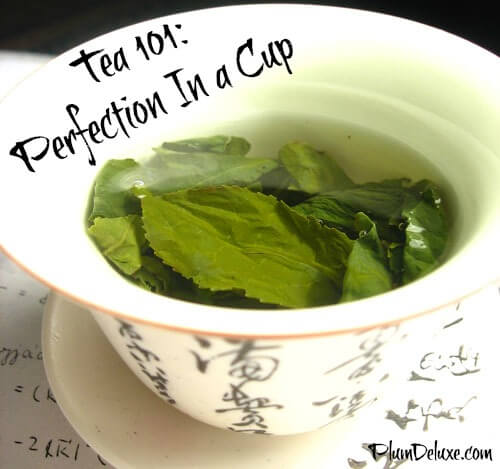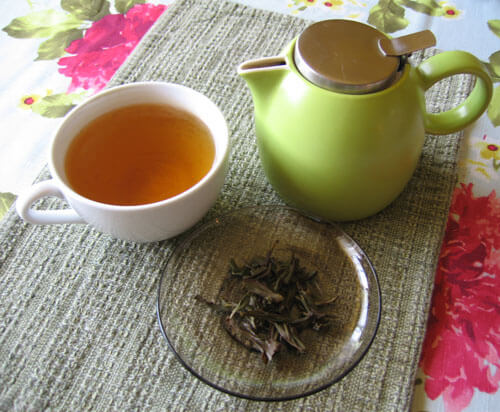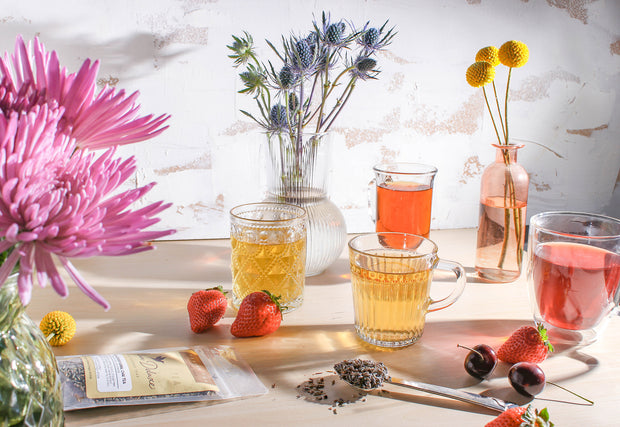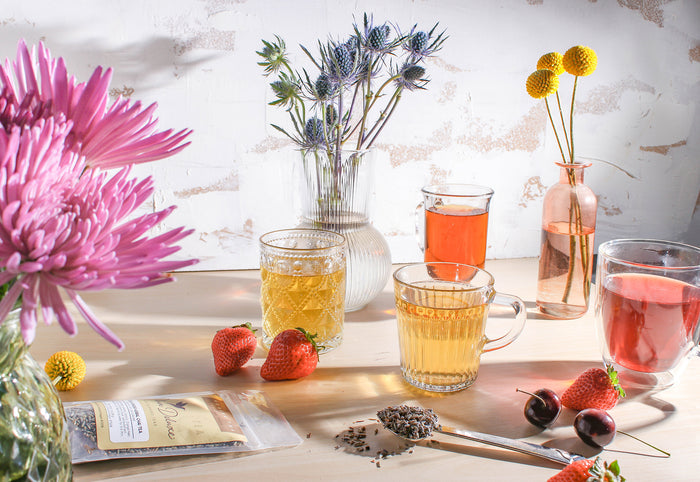Tea: recipient of my undying passion. No, I’m not crazy -- two billion people all over the globe are also in love with tea, making it the most consumed beverage in the world (after water, naturally). For some it’s the flavor and the health benefits; for others it’s a ritual, a way of socializing, a form of greeting.
How much do you really know about tea? Let’s take a crash course!

What is Tea?
This is not a dumb question; a lot of people get legitimately confused about what does and does not constitute “tea.” Technically speaking, tea only comes from the camellia sinensis plant; anything that does not come from the camellia sinensis is not actually tea. This includes herbal concoctions, which are technically called “tisanes.” A tisane is any non-caffeinated beverage that is made from herbs or plant matter steeped in water. Your favorite chamomile “tea” is actually a tisane.

Black, White, and Green All Over
Okay, back to tea. What’s up with all those colors? And what’s the difference in flavor?
As we learned above, all tea comes from the same plant. The leaves and buds of this plant are harvested and oxidized at different levels to produce the various white, green, black, and oolong teas. The longer a tea is allowed to oxidize, the darker it becomes. Black tea is oxidized the longest and white tea not at all; the other teas fall somewhere in between.
Oxidation affects not only the color but also the flavor and caffeine level of the tea. Black teas have a robust, more spicy flavor and contain the most caffeine, while white and green teas are lighter with more floral notes and usually have low amounts of caffeine. Oolongs run the gamut, from almost green to nearly black, with a variety of flavor profiles and caffeine levels.
Oxidation is stopped by heating, and then the tea is dried and packaged for wholesale shipment. It may also be blended with other teas from different regions, like English breakfast, or it might be flavored with oils, like Earl Grey.

Un-bag It: Choosing Good Tea
Once a batch of tea is processed, it is sorted according to leaf quality. The highest quality of leaves have the least amount of blemishes and, therefore, the best flavor; they will be sold as loose, whole leaf tea. The tea used in tea bags is really just the lower quality leftovers from the tea-making process; it’s mostly broken twigs and leaf dust.
Some companies will use tea somewhere in the middle to make their tea bags; this tea is usually comprised of larger bits of broken leaves and twigs. In the image above, you can see, from left the right, the difference between a high quality loose leaf tea, a mid-range loose leaf bagged tea, and a low-quality bagged tea.
A general rule of thumb when looking at tea is the larger the leaf, the higher the quality and the better the flavor.
While tea bags are convenient, most of the flavor is lost, which is why I always recommend loose leaf tea to anyone who truly wishes to enjoy their beverage. You can also resteep high quality loose leaf teas, making them more economical than bagged teas -- which should not be resteeped -- in the long run. While loose leaf takes an extra step of preparation, it’s worth it to catch the woodsy tones of an oolong or the savoriness of a green tea. It’s also a way to treat yourself to something special in the midst of a frantic schedule.
Want to try loose leaf tea for yourself? Check out our very own Plum Deluxe tea shop, and don’t overlook teas from your local coffee or tea shop, either.

Prepping the Perfect Cup
Making tea is as simple as hot water poured over leaves -- except that it isn’t. The type of tea you are drinking will determine your water temperature and steeping times, both of which affect the taste of the tea. Your water itself can even change the flavor of the final beverage.
It can take some trial and error to get it just right, but once you’ve adjusted your tea-making process to your taste, you’ll have no trouble doing it every day. Your tea-making time can even become a way for you to take a break and clear your mind.
First, make sure to use filtered or spring water; treated water has too many chemicals that can make your tea taste bad. Heat the water according to the kind of tea you are brewing: full boil for black teas, just boiling for greens, and not quite boiling for whites. Pour the heated water over the tea leaves and allow them to steep for the recommended time, which should be noted somewhere on the tea’s packaging. If you’re confused, there’s a wonderful chart for temperature and steeping times right here.
While you are choosing, preparing, and drinking your tea, remember to take time to enjoy the flavors of the beverage. A good cup of tea is a true, affordable luxury!
All images courtesy of the author except the lead image by Wikimol.

![Spring Break Tea Variety Pack [6-Pack Variety of Flavors]](http://www.plumdeluxe.com/cdn/shop/files/spring-break-pack.jpg?v=1740682266&width=165)















